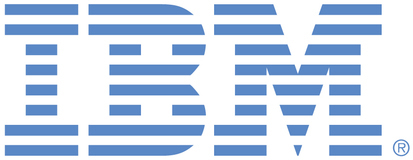
This portal is to open public enhancement requests against IBM Power Systems products, including IBM i. To view all of your ideas submitted to IBM, create and manage groups of Ideas, or create an idea explicitly set to be either visible by all (public) or visible only to you and IBM (private), use the IBM Unified Ideas Portal (https://ideas.ibm.com).
Shape the future of IBM!
We invite you to shape the future of IBM, including product roadmaps, by submitting ideas that matter to you the most. Here's how it works:
Search existing ideas
Start by searching and reviewing ideas and requests to enhance a product or service. Take a look at ideas others have posted, and add a comment, vote, or subscribe to updates on them if they matter to you. If you can't find what you are looking for,
Post your ideas
Post an idea.
Get feedback from the IBM team and other customers to refine your idea.
Follow the idea through the IBM Ideas process.
Specific links you will want to bookmark for future use
Welcome to the IBM Ideas Portal (https://www.ibm.com/ideas) - Use this site to find out additional information and details about the IBM Ideas process and statuses.
IBM Unified Ideas Portal (https://ideas.ibm.com) - Use this site to view all of your ideas, create new ideas for any IBM product, or search for ideas across all of IBM.
ideasibm@us.ibm.com - Use this email to suggest enhancements to the Ideas process or request help from IBM for submitting your Ideas.
There are so many more goodies within RPG. Why do we need 2 languages It would be better to add the ability to run CL commands directly from RPG. similar to SQL.
Exec CL RTVSYSVAL SYSVAL(QTIMZON) RTNVAR(&TIMZON);
IBM does not intend to provide a solution to this request at this time, so it is being closed.
IBM has received this requirement and is evaluating it. IBM will provide a response after evaluation is complete.
The CAAC has reviewed this requirement and recommends that IBM view this as a medium priority requirement that should be addressed. It would be wonderful to have data structures in CLLE only -- this would greatly improve usability with APIs.
Background: The COMMON Americas Advisory Council (CAAC) members have a broad range of experience in working with small and medium-sized IBM i customers. CAAC has a key role in working with IBM i development to help assess the value and impact of individual RFEs on the broader IBM i community, and has therefore reviewed your RFE.
For more information about CAAC, see www.common.org/caac
For more details about CAAC's role with RFEs, see http://www.ibmsystemsmag.com/Blogs/i-Can/May-2017/COMMON-Americas-Advisory-Council-%28CAAC%29-and-RFEs/
Nancy Uthke-Schmucki - CAAC Program Manager
I could also think about something like this
DCLDS NAME(&EXTDSNAME1) EXTDEF(PFNAME)
DCLDS NAME(&EXTDSNAME2) LIKE(&EXTDSNAME1)
+1 vote if it supports the IMPORT functionnality
http://www.ibm.com/developerworks/rfe/execute?use_case=viewRfe&CR_ID=139578
The functionality is already available with DCLF FILE(extDS)
What is missing is the IMPORT(someExportedDS) parameter on the DCLF command so we can reference a data struc in a SRVPGM or MODULE
Due to processing by IBM, this request was reassigned to have the following updated attributes:
Brand - Servers and Systems Software
Product family - Power Systems
Product - IBM i
Component - Languages - CL (Control Language)
Operating system - IBM i
Source - None
For recording keeping, the previous attributes were:
Brand - Servers and Systems Software
Product family - Power Systems
Product - IBM i
Component - Core OS
Operating system - IBM i
Source - None
Use ILE RPG. The QCAPCMD API can run CL commands like a champ. I haven't even written a CL program for years.
While it is true that the CL/LE DCL STG(*DEFINED ) parameter allows the creation of data-structure-like definitions, having explicit data structure support would be *much* easier to use. Implied positioning of subfields within the data structure and dot-syntax for qualifying data structure subfield references would go a *long* way towards simplifying the whole idea of consuming data structures in CL/LE.
Believe we already have it. Not as DCLDS but it works:
DCL VAR(&STL1090A) TYPE(*CHAR) LEN(256) <---- your DCLDS
DCL VAR(&IAJOBLOG) TYPE(*LGL) STG(*DEFINED) LEN(1) DEFVAR(&STL1090A 1) <---- your subfields
DCL VAR(&IADEBUG) TYPE(*LGL) STG(*DEFINED) LEN(1) DEFVAR(&STL1090A 2)
DCL VAR(&IACTLNODE) TYPE(*CHAR) STG(*DEFINED) LEN(8) DEFVAR(&STL1090A 3)
etc....